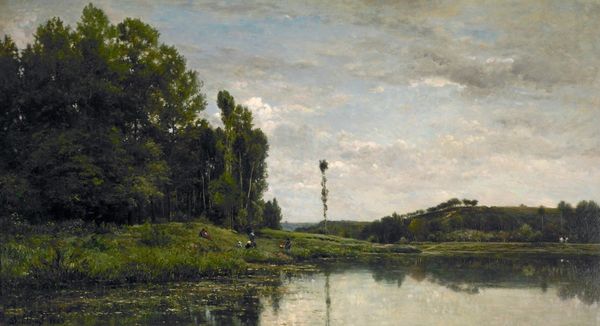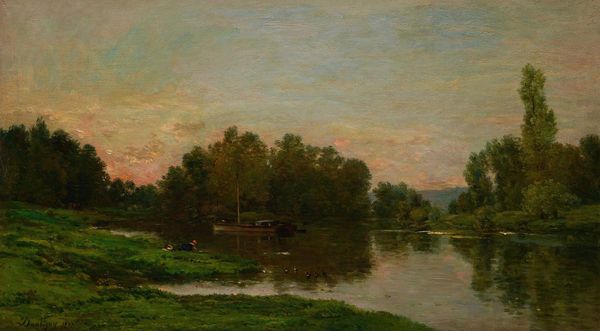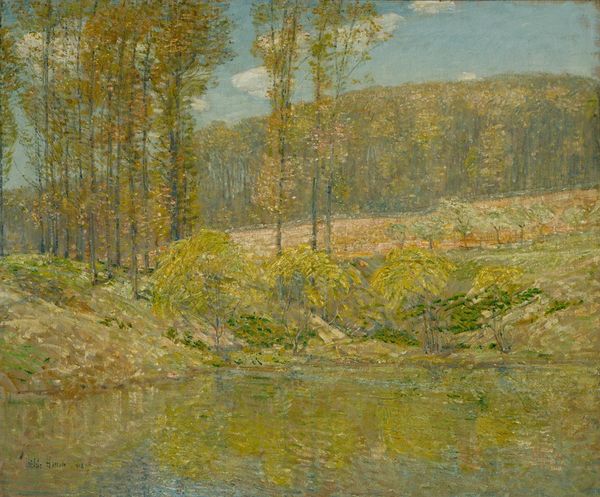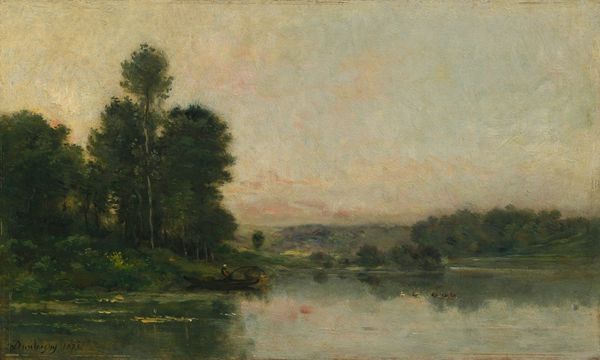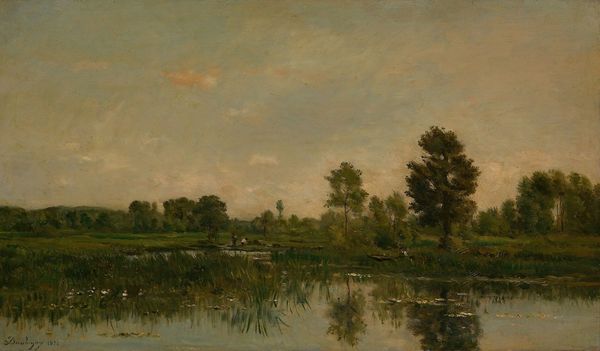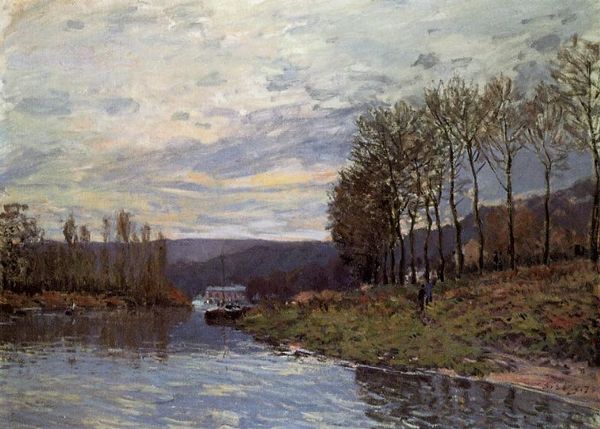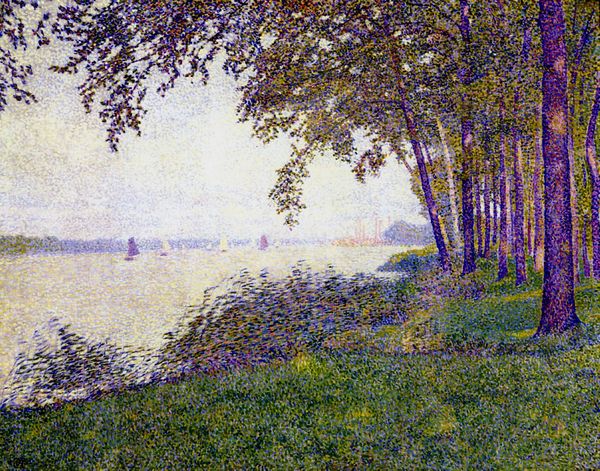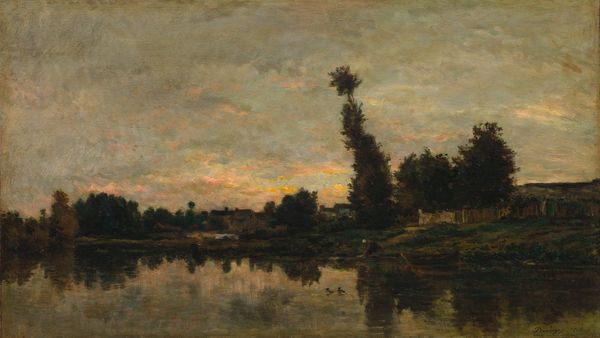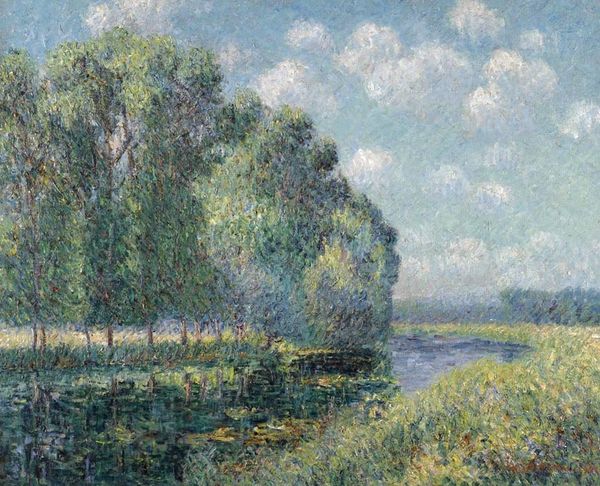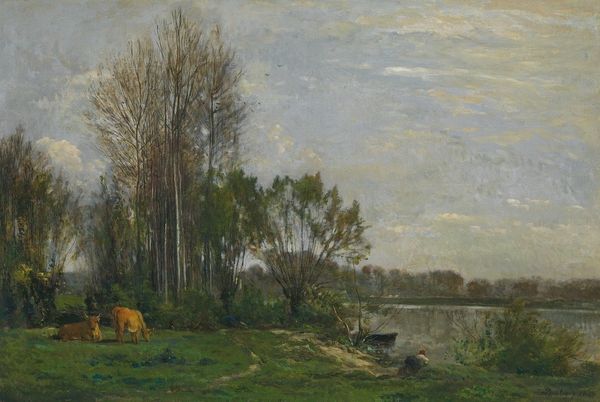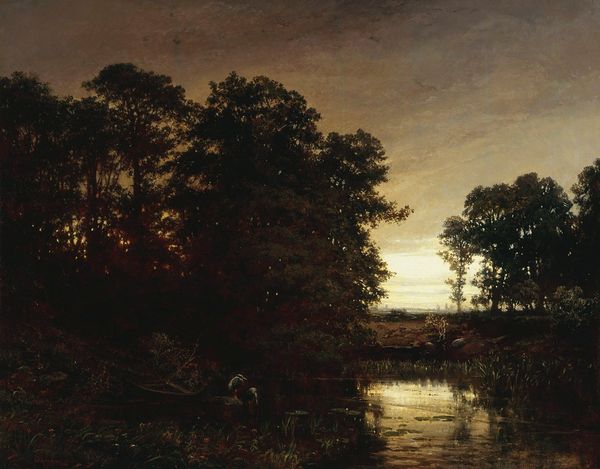
Copyright: Public domain
Editor: Vilhelms Purvītis’s "Landscape with Birch Trees," painted in 1910, presents a very tranquil scene. There’s a quietness that seems to emanate from the canvas. How would you interpret this piece? Curator: The birch, of course, has always been a symbol of new beginnings and renewal across cultures, and a visual signifier of spring. Considering it was painted in 1910, on the cusp of so much global upheaval, do you see it as perhaps a hopeful, yearning image? The almost ethereal light adds another layer to that, don't you think? Editor: Yes, absolutely. The light definitely contributes to that feeling, like a memory. But I was also struck by how still the water is. Curator: The stillness of the water, reflecting the trees, becomes a mirror— a place for introspection. And reflections are so important in art; a reminder that images carry layered meanings. The choice to focus on a familiar symbol during an uncertain period says so much. Editor: That's fascinating, the birch as a symbol of renewal during a time of upheaval. It gives the painting a much deeper emotional weight. I was just seeing it as pretty at first. Curator: Exactly! What appears on the surface can lead us to hidden depths of symbolic significance, like a pathway into collective dreams and fears. You start with pretty, then go further in. Editor: Well, I’ll definitely look at landscapes differently now. Thanks! Curator: My pleasure! Thinking of images as carriers of cultural memory changes everything, doesn't it?
Comments
No comments
Be the first to comment and join the conversation on the ultimate creative platform.
